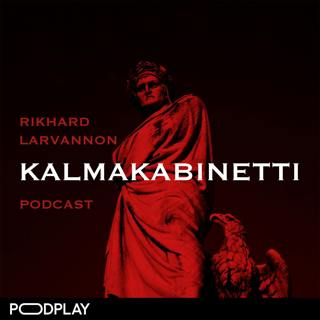
124. The tide begins to ebb
When the Earl of Derby’s second government fell, Victoria tried to impose a Prime Minister of her choice on the elected politicians who felt rather differently. That, though, was obsolete thinking. In the end she had to take Palmerston back. He was now 75, though as ready for hard work as ever. He faced a number of foreign affair challenges, most of them wars. A war with China to complete successfully on behalf of drug pushers. A war to avoid with France, which he did with a little help from two non-ministers, Richard Cobden in Britain and Michel Chevalier in France. A war in Italy. A German war against Denmark. One big lesson was that the days when Britain could dictate terms to its neighbours and get its way, were gone. If any country was going to be able to play that game, the experience of Denmark showed it would be more likely to be the Germany Prussia aspired to build and lead. Britain might not have seen it yet, but the writing was on the wall for its global military power, which was beginning to ebb. Meanwhile, another war was raging across the Atlantic. It too would have a major impact on Britain. But that’s for next week. Illustration. Henry John Temple, third viscount Palmerston, in later life, by Francis Cruikshank National Portrait Gallery 3953 Music: Bach Partita #2c by J Bu licensed under an Attribution-NonCommercial-No Derivatives (aka Music Sharing) 3.0 International License.
8 Tammi 202314min

123. Dizzy times
This week we’re into Dizzy times again. Disraeli, or Dizzy as he came to be known, had played a leading role in bringing down the Palmerston government in 1858. That allowed the Earl of Derby, leader of the Conservatives, to form his second administration. With Derby in the Lords, responsibility for managing the government’s affairs in the Commons fell to Dizzy, as Leader of the House of Commons, and he also became Chancellor of the Exchequer again. The Derby government brought in the legislation that ended the East India Company’s rule in India, replacing it by direct rule from London and launching the British Raj. Next, Disraeli picked up the cause of electoral reform, surprisingly for a Conservative. He realised, as few in his party had, that extending the vote might actually benefit the Conservatives, and that there was no inevitability to artisans voting Liberal. But the reform proposals failed as the Liberals, finally getting their act together, rallied enough force to defeat the government, and then did it again following a general election in which the Conservatives did well but not well enough to win an outright majority. The second Derby government had lasted sixteen months, barely more than the ten months of the first. And Dizzy had to move back into Opposition. Illustration: Benjamin Disraeli, photo from the early 1860s, printed by Henry Lenthall, after William Edward Kilburn. National Portrait Gallery Ax46252. Music: Bach Partita #2c by J Bu licensed under an Attribution-NonCommercial-No Derivatives (aka Music Sharing) 3.0 International License.
1 Tammi 202314min

122. Events, dear boy, events
After discussing his relative success with a moderately liberal programme in England last time, in this episode we talk about Palmerston’s far greater difficulties abroad. There was another Opium War in China, as Britain fought to enforce the East India Company’s right to push drugs there, and then an uprising in India, which Brits still like to think of as a mutiny though many Indians see it as a War of Independence. Both events involved extensive brutality, most of it by Britain, but Palmerston did just fine in the debates on both. The stumbling block proved to be something far less significant: a terrorist outrage in Paris by a man who’d had some connection with England. The French demanded that Palmerston take action, and he responded by proposing new legislation. That had seemed to many like kowtowing to the French, and the Opposition in parliament was able to engineer a victory in a vote against his government’s behaviour. Oddly, that was on the very night after his victory over military action in India. One evening, he was victorious, the next he was out. Events, you see, events are the real killers in a statesman’s existence. Illustration: Sepoy Mutiny, 1857 by Charles Granger, showing a scene from the 1857 Indian uprising. From Wikimedia Commons. Music: Bach Partita #2c by J Bu licensed under an Attribution-NonCommercial-No Derivatives (aka Music Sharing) 3.0 International License.
25 Joulu 202214min

121. After Crimea
After the signing of the Treaty of Paris, the troops came home from Crimea, as did the remarkable women we talked about last week: Mary Seacole and Florence Nightingale. They came back to different lives: Nightingale went on to do seminal work in nursing and in healthcare analysis – she revealed an unusual grasp of mathematical methods and became the first female member of the Royal Statistical Society – while Seacole faced bankruptcy and closed doors. Could that be down to her blood running, as she put it, “under a duskier skin” than that of most Brits? Before we finally leave Crimea, this episode includes a quick digression about another remarkable healthcare specialist, this time on the Russian side, the military surgeon Nikolay Pirogov. Then, like the troops, we return to England. There Palmerston was pursuing a liberal domestic policy programme, but as we’ll explore more next week, he was about to encounter events in foreign affairs that would put a spoke in his wheels. Illustration: Detail from Diagram of the causes of mortality in the army in the East (1858) by Florence Nightingale, a coloured pie chart to illustrate causes of death in the British Army. Public domain in its source country on January 1, 1996 and in the United States. Music: Bach Partita #2c by J Bu licensed under an Attribution-NonCommercial-No Derivatives (aka Music Sharing) 3.0 International License.
17 Joulu 202214min

120. Two remarkable women
Mary Seacole, Jamaican and Mixed Race, and Florence Nightingale, White and from the English middle class, both in different ways did extraordinary work in Crimea as nurses. They both opened the doors to a different kind of nursing, in which practical steps such as good hygiene was vital, alongside a caring attitude towards patients. The two met but never worked together. For the kind of radical change in nursing they ushered in, both showed the necessary qualities to an impressive extent. However, Seacole found that the authorities, and even Nightingale herself, made it far harder for her to be allowed to give all she could to the sick and wounded of Crimea. Which makes it hard not to ask, as she did, whether it might not be because her “blood flowed beneath a somewhat duskier skin than theirs”. Illustration: Mary Seacole by Albert Charles Challen, National Portrait Gallery 6856 (image reversed left-to-right), and Florence Nightingale by Jerry Barrett, National Portrait Gallery 2939 Music: Bach Partita #2c by J Bu licensed under an Attribution-NonCommercial-No Derivatives (aka Music Sharing) 3.0 International License.
11 Joulu 202214min

119. Ending a war, replacing a government
Conditions in Crimea were appallingly bad, and all sides lost more men to disease than in combat. Britain did particularly badly in the first year, when the French performed rather better. However, in the second year (two years, note: the quick war the Allies had hoped to fight had transformed into a grind) the British did far better, and much of that was down to a radical change in healthcare. Next episode we’ll be looking at two people who played key roles in that process, Florence Nightingale and Mary Seacole. With the slow siege of Sevastopol grinding on with little progress, while the cost in lives and treasure constantly climbing, the government eventually fell. The hunt for a new one revealed two striking facts: William Gladstone was an increasingly key figure in British politics, and the pressure propelling Palmerston onwards and upwards was finally going to get him into Downing Street. He would be in charge in Britain as the war ended, with limited concessions from Russia, all of which would be reversed within 24 years. Leaving the question, was it all worth it? And wouldn’t the expenditure, seven times higher than relief for the Irish famine, have been far better spent there than on this bitter, costly and ultimately unproductive war in Crimea? Illustration: Combat dans la Gorge de Malakoff by Adolphe Yvon: the French capture of the Malakoff,. Public Domain. Music: Bach Partita #2c by J Bu licensed under an Attribution-NonCommercial-No Derivatives (aka Music Sharing) 3.0 International License.
4 Joulu 202214min

118. Someone had blundered
Extraordinary! For once, instead of being at war with each other, Britain and France are going to war together against someone else. In this instance, Russia. And eventually in Crimea. Where the war is pretty much a constant succession of cockups, mostly by Britain, but from time to time by France too. One of the most spectacular is also the most celebrated moment from that whole ghastly war, the Charge of the Light Brigade. Usually presented, not least by Alfred Lord Tennyson in his poem , as heroic it is in fact a ghastly case of incompetence compounded by personal conflicts leading to needless deaths for no useful gain. Emblematic of the whole war, as it happens. Illustration: The Relief of the Light Brigade by Richard Caton Woodville, Jr., public domain, via Wikimedia Commons Music: Bach Partita #2c by J Bu licensed under an Attribution-NonCommercial-No Derivatives (aka Music Sharing) 3.0 International License.
27 Marras 202214min

117. Russian Bear
Just as, after the Second World War, the Western European powers were grateful to Russia for using its colossal military force to ensure the defeat of Hitler’s Germany, while still being frightened of that military, so in the 1850s, those same powers were grateful for the role Russia played in bringing down Napoleon, while feeling nervous about the huge military power it had used. By that time, Russia’s threat was growing again. The Tsar, Nicholas I, saw himself as the protector of Orthodox Christians and Slavs. Everywhere. That included the 14 million inside the Ottoman (Turkish) empire. When he issued a demand to be officially granted authority to provide such protection, and that demand was rejected, Russia and Turkey slid quickly to war. The Western Powers watched aghast. Despite their ancient rivalry, even France and Britain, pulled together in the face of this Russian action. Gradually, and against the resistance of many, even at the top of government, the two nations found themselves compelled towards war. It was finally declared, by both Britain and France, in March 1854. Setting the stage for what would come to be known as the Crimean War. Illustration: Ivan Aivazovsky’s 1853 The Battle of Sinop (Wikimedia Commons) Music: Bach Partita #2c by J Bu licensed under an Attribution-NonCommercial-No Derivatives (aka Music Sharing) 3.0 International License.
20 Marras 202214min





















